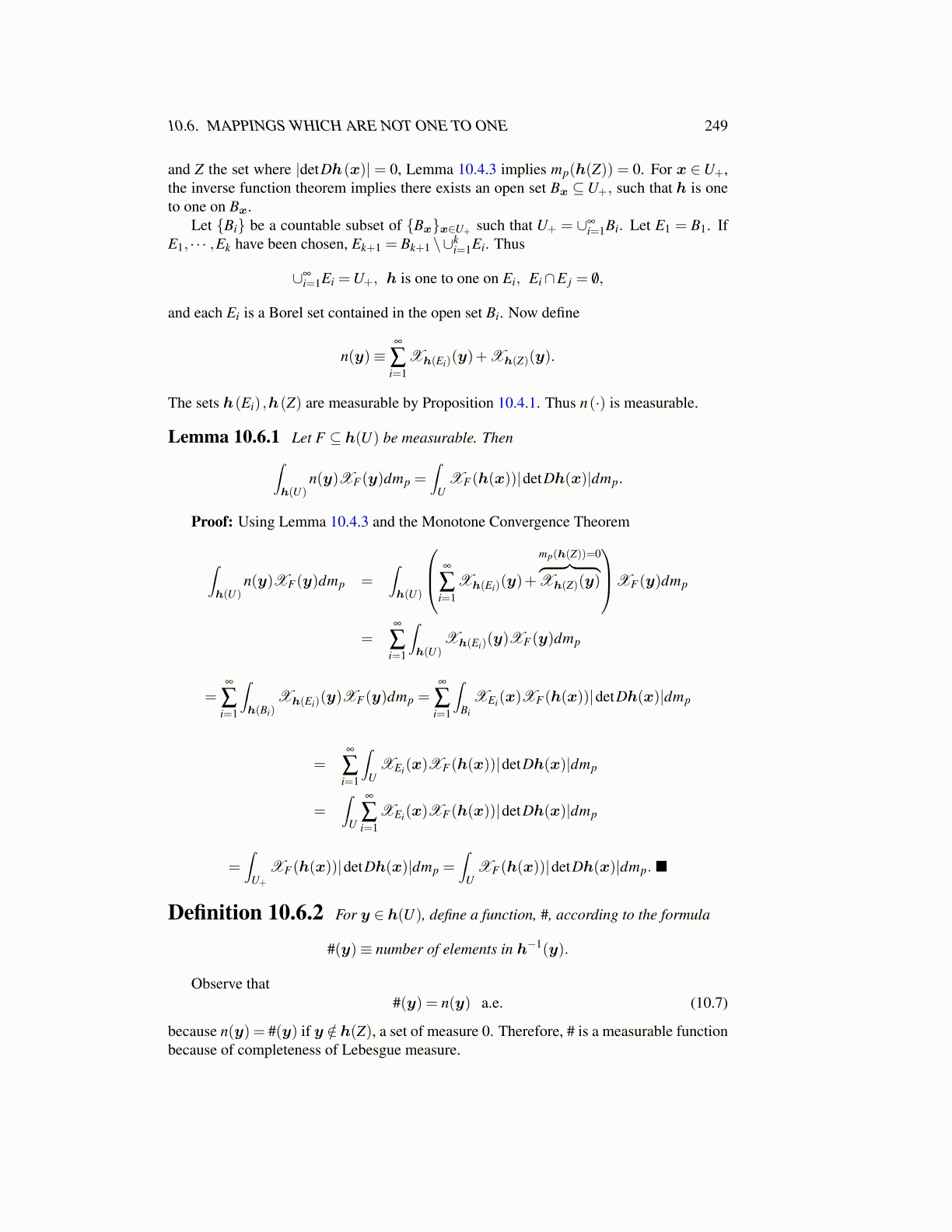
10.6. MAPPINGS WHICH ARE NOT ONE TO ONE 249
and Z the set where |detDh(x)| = 0, Lemma 10.4.3 implies mp(h(Z)) = 0. For x ∈U+,the inverse function theorem implies there exists an open set Bx ⊆U+, such that h is oneto one on Bx.
Let {Bi} be a countable subset of {Bx}x∈U+ such that U+ = ∪∞i=1Bi. Let E1 = B1. If
E1, · · · ,Ek have been chosen, Ek+1 = Bk+1 \∪ki=1Ei. Thus
∪∞i=1Ei =U+, h is one to one on Ei, Ei∩E j = /0,
and each Ei is a Borel set contained in the open set Bi. Now define
n(y)≡∞
∑i=1
Xh(Ei)(y)+Xh(Z)(y).
The sets h(Ei) ,h(Z) are measurable by Proposition 10.4.1. Thus n(·) is measurable.
Lemma 10.6.1 Let F ⊆ h(U) be measurable. Then∫h(U)
n(y)XF(y)dmp =∫
UXF(h(x))|detDh(x)|dmp.
Proof: Using Lemma 10.4.3 and the Monotone Convergence Theorem
∫h(U)
n(y)XF(y)dmp =∫h(U)
∞
∑i=1
Xh(Ei)(y)+
mp(h(Z))=0︷ ︸︸ ︷Xh(Z)(y)
XF(y)dmp
=∞
∑i=1
∫h(U)
Xh(Ei)(y)XF(y)dmp
=∞
∑i=1
∫h(Bi)
Xh(Ei)(y)XF(y)dmp =∞
∑i=1
∫Bi
XEi(x)XF(h(x))|detDh(x)|dmp
=∞
∑i=1
∫U
XEi(x)XF(h(x))|detDh(x)|dmp
=∫
U
∞
∑i=1
XEi(x)XF(h(x))|detDh(x)|dmp
=∫
U+
XF(h(x))|detDh(x)|dmp =∫
UXF(h(x))|detDh(x)|dmp. ■
Definition 10.6.2 For y ∈ h(U), define a function, #, according to the formula
#(y)≡ number of elements in h−1(y).
Observe that#(y) = n(y) a.e. (10.7)
because n(y) = #(y) if y /∈h(Z), a set of measure 0. Therefore, # is a measurable functionbecause of completeness of Lebesgue measure.